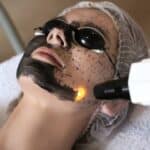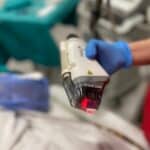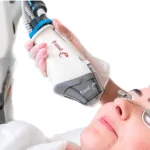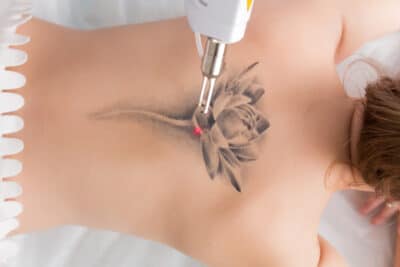 What is Tattoo Removal? How Is Laser Tattoo Removal Performed? Here are all the details…
What is Tattoo Removal? How Is Laser Tattoo Removal Performed? Here are all the details…
After getting a tattoo, the popularity of which is increasing day by day, many people may regret their tattoos. The only solution for this is tattoo removal. Unwanted tattoos can be removed with tattoo removal. Research shows that 1 in 4 people are considering removing their tattoos because they are not satisfied with it.
Among the most important reasons cited for tattoo removal are:
- Allergic reactions
- Decreased desire to carry the tattoo owned
- Getting a job where having a tattoo is a problem
- Request for a different tattoo
- Not being mature enough when tattooed, regretting it
For people who apply for such reasons, tattoo removal processes are performed using the latest technologies. These applications are made with the help of experts. In the past, more surgical methods were used for tattoo removal, but today laser tattoo removal is applied. You can easily say goodbye to unwanted tattoos with the laser method, which is more painless.
The most practical and reliable method that stands out in tattoo removal processes is Q switch Nd YAG laser technology. The most scientifically researched and known laser for tattoo removal is the Q switch Nd YAG laser. Recently, picolasers have also been found to be effective.
What are the stages of tattoo removal application?
First, the tattoo is analyzed in depth. Elements such as size, color, depth are examined. The amount of paint used is also important. The fact that the tattoo is very colorful and very old are the factors that complicate the erasing process. Tattoo removal may not be correct without a good dermatological examination.
Secondly, the skin is thoroughly disinfected. Anesthetic cream is applied to the area where the procedure will be performed. Thus, less pain is felt during the procedure. The process begins by adjusting the dose of the laser device to be used at the appropriate rate for the tattoo. After the procedure, an antibiotic cream and a moisturizer suitable for the skin type are applied to the area where the application is made.
How is laser tattoo removal done?
Laser tattoo removal is the most effective tattoo removal process. Laser beams pass through the epidermis layer of the skin and are absorbed by the agents that give the tattoo color in the dermis and subcutaneous tissue. Thus, these substances are broken down and eliminated by the immune system.
One of the most effective tattoo removal laser technology is Q-switched Nd laser technology. Q-switched Nd, also known as YAG laser, is the technology that has the widest color spectrum among tattoo removal methods, thanks to laser beams of different colors and wavelengths.
Another of the latest laser tattoo removal techniques is the Pico laser tattoo removal treatment. Pico laser technology distinguishes itself from other laser devices by making one-trillionth of a second compared to other laser technologies. It can break the paint into much smaller pieces as it performs a rapid pulse in a very short time.
Pico laser is absorbed by the dyestuffs in the lower region with the special wavelength laser light without damaging the upper skin. Thus, with the laser energy given, the pigments are divided into small pieces and these pieces are removed by the body’s special duty systems.
It is more convenient and practical to delete tattoos with dark colors. Light color requires a more difficult treatment process than dark color. Tattoos in dark colors absorb all kinds of light. Thus, easier results are obtained.
Anesthesia is usually not required during tattoo removal procedures. However, local anesthesia may be required for some sensitive people. Swelling and redness may be seen in the application area from time to time. But these complications disappear within a week at the most.
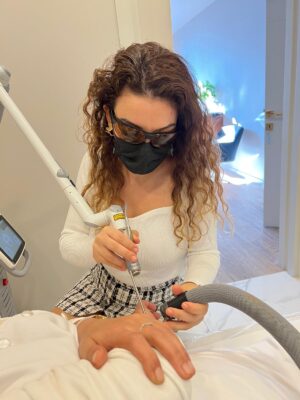 Can anyone have laser tattoo removal? Can the procedure be applied to every region?
Can anyone have laser tattoo removal? Can the procedure be applied to every region?
As long as laser tattoo removal is applied by a specialist, it is a very reliable application without serious side effects. People can do this with peace of mind. However, in some special cases, tattoo removal may not be appropriate. In addition, performing the procedure in each region can be harmful. These situations are:
- It is not correct to apply to people under the age of 18.
- Laser tattoo removal is not recommended for pregnant women.
- It is not recommended for hepatitis B patients and people with skin diseases.
- Tattoo removal is not recommended on scars and open wounds.
- It is not recommended for people with eczema and fungal diseases.
- It is not recommended to have it done on the skin, inside the ear and nose.
- It is not recommended to apply the procedure around the eyes and eyelashes.
How many sessions does tattoo removal take?
In laser tattoo removal procedures, sessions are applied at maximum 6-8 week intervals. However, the number of sessions varies from person to person.
The color and size of the tattoo affects the number of sessions. Accordingly, it differs between 3 and 15 sessions. With these sessions applied intermittently, the person achieves the desired result to a large extent. The treatment process varies according to the date the tattoo was made. When many results are compared, the success of removing recently applied tattoos is higher and the desired result is achieved in a shorter time. Another factor affecting the duration of the treatment is whether the person performing the procedure is an amateur or an expert. Tattoo removal procedures must be carried out under the control of a specialist physician. Tattoo removal procedures performed by specialists may take a longer period of time. However, the yield will be many times higher. Dark tattoos are easier to remove than light colored tattoos.
Will there be any scars after laser tattoo removal?
It is possible to get very satisfactory results after laser tattooing. A white and raised scar may occur immediately after the procedure. These traces lose their visibility after a while. Those who wish can choose to cover the existing scar by having a different tattoo on the same area later on. The areas that are particularly prone to scarring are the chest, upper arm and ankle.
After laser treatment, some tattoos may not be completely erased or a light or dark scar may be left on the skin. This risk is higher for very old and multi-colored tattoos. You can discuss this risk with your doctor.
What are the side effects of laser tattoo removal?
As with most cosmetic procedures, tattoo removal has some side effects and risks. In the tattoo removal process applied by professional people, the side effects and risk rates are minimized. However, this procedure performed in an unsuitable place can cause very serious reactions. For example, the operation performed with a low-quality device and the uneducated and inadequate personnel on this subject increase the likelihood of hyperpigmentation, known as an increase in skin color, or depigmentation, known as a decrease in skin color.
The fact that the necessary hygiene conditions are not provided in the center where the procedure will be performed will increase the risk of infection in the region. On the other hand, certain temporary side effects of the procedure can be seen. Redness, itching, crusting are a few of them. These are temporary and non-serious complications.
What should be known before and after laser tattoo removal?
Before laser tattoo removal, exposure to very hot environments such as sunbathing, sauna, Turkish bath and solarium should be avoided. If you have stayed in such environments, it would be more appropriate to start the treatment 2-3 days later.
The application area should be kept clean, moistened regularly and possible crusts should not be removed.
The treatment area should not be exposed to direct sunlight for 2-3 weeks due to crusting and shedding of the crusts, and an extremely hot environment should be avoided.
No further treatment should be applied to the area until the healing process of the wound is complete.
What is the treatment process after laser tattoo removal?
The treatment process is divided into 3 stages. These are: wound and crusting of the area and the healing period. Tattoos that have been erased at first remain as a white mark, then gradually turn red. It takes the consistency of the wound after the application area. After 3-5 days, a transparent crust forms on the skin and within 2-3 weeks, this crust dries up and exfoliates. The area where the procedure is applied becomes a reddened image. This means that the wound has begun to heal. As time passes, the amount of the damaged part of the tattoo and the remaining part of the tattoo will become evident.
Is laser tattoo removal a painful procedure?
It is possible to feel a slight pain in the laser tattoo removal process. However, this pain is not more than the pain experienced when getting a tattoo. It is aimed to minimize the pain threshold with local anesthetic creams given during the procedure.
Can permanent make-up be removed by laser?
While black and brown permanent makeup applied for eyebrows can be removed, laser devices for lips or skin-colored applications (bb glow-permanent foundation application) cannot usually choose the same color as the skin. For this reason, we do not recommend permanent foundation application.
Is it possible to partially erase the tattoo?
Partial tattoo removal is also possible. For this process, finer laser techniques are applied.
What is the success rate in tattoo removal?
The factors affecting the success of tattoo removal are as follows:
- It is a very important factor that the dye given during tattooing is given into the skin at the same level. This also shows the professionalism of the person who made that tattoo. Because of the dyes that are not given at the same level, the laser beam stops in the upper region and cannot reach the lower region.
- The success rate is higher in tattoos in which only one color is used.
- The chances of success are higher in tattoos with a medium-dark color rather than a pale or very dark color.
- The quality of the paint used while tattooing is directly proportional to the success of the erasing process.
How much does laser tattoo removal cost? All information about prices
Laser tattoo removal prices vary according to the area where the application will be made, the size of the tattoo, the clinic where the application will be made, and the person who will do the application. In addition to the price, the hygiene of the environment where the procedure will be performed and the professionalism of the person who will perform the procedure are also very important. It is not legal for centers approved by the Ministry of Health to specify prices on their websites. You can reach our clinic by calling +902122414624 for the most accurate price information for you and for all your other questions.

